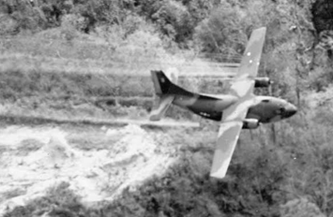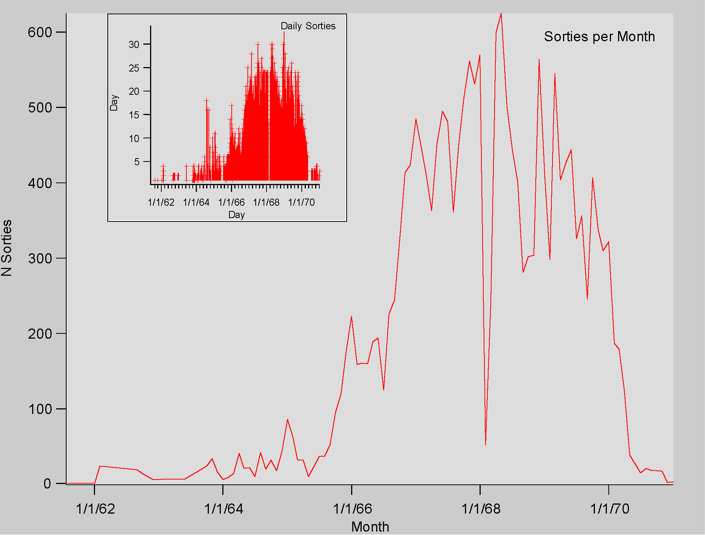

|
An Operation Ranch Hand spray mission. |
Between 1961 and 1971, nearly twenty million of gallons of chemical herbicides were used in the Republic of Vietnam (RVN), primarily to defoliate forests and woods and along the shores of inland waterways. The defoliation operations served to improve visibility for fighter aircraft and to limit the ability of enemy forces to use the thick forests for camouflage. Herbicides were also used to destroy rice and other food crops that were thought to be supplying nourishment enemy forces. The US Air Force was in charge of the defoliation mission and carried out most of the spraying operations using the codename Operation Ranch Hand.
The Operation Ranch Hand chemicals were given nicknames that corresponded to the color of the identification stripe painted on the 55-gallon steel drums in which they were shipped to Vietnam. Agent Orange is the most widely recognized among them, but Agents White, Blue, Pink, Green and Purple were also used during the Vietnam War. More details on the chemicals used are available here.

|
Figure 1: Number of sorties per month and day flown by C-123 fixed wing aircraft and recorded in the HERBS files. (click to enlarge) |
During the course of Operation Ranch Hand, C-123 fixed wing aircraft carried out thousands of spray missions over the US ally, the Republic of South Vietnam. North Vietnam was not sprayed. Spray activities also took place over Laos and spray drifted onto Cambodian territory, although the record shows no approved projects over Cambodian territory. The spray record over Laos is incomplete.
We used a data set on the herbicide spray (usually called the HERBS files) that was developed by the Department of Defense, to estimate that about 395,953 gallons, or 2% of the total herbicides sprayed, were used to kill the vegetation around military installation perimeters to keep them clear and unobstructed. Except for a relatively few perimeter spray missions around Army Special Forces camps, most perimeter spraying was not part of Operation Ranch Hand. Rather, US Army forces, using helicopters and backpack sprayers, cleared the perimeters. Much of the basecamp perimeter spraying in Vietnam used diesel fuel.
Over the years, a complex process of spray mission planning and approval was developed by the US and the RVN, with a formal request made by the RVN for each Ranch Hand mission that was planned and carried out. The US National Archives has an incomplete set of folders that document the various defoliation and crop destruction missions. The Project Folders provide an understanding of the overall mission and execution of Operation Ranch Hand in Vietnam.
Return to "Background on the Herbicides"